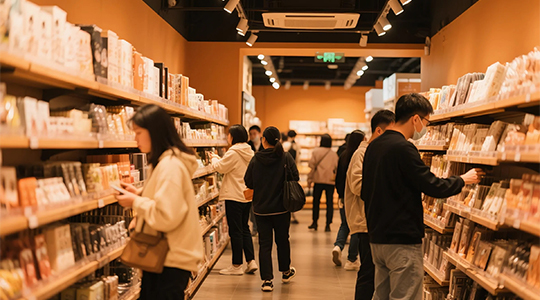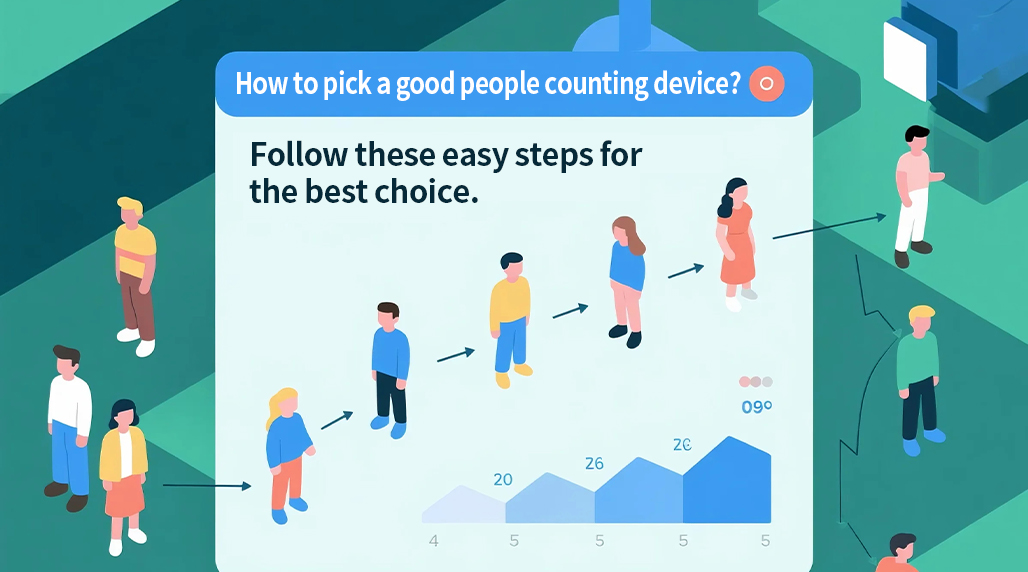Understanding People Counting Devices
People counting devices, also known as footfall counters or customer counters, are electronic systems designed to automatically quantify the number of individuals passing through a specific entrance, exit, or designated area. Their primary function is to provide accurate data on human traffic, enabling businesses and organizations to make informed decisions.
Core Technologies in People Counting
Several technologies underpin the functionality of people counting devices, each with its own set of advantages and limitations:
- Infrared (IR) Beams: These devices use a transmitter and receiver to create an invisible beam. When someone passes through, the beam is broken, and a count is registered. While cost-effective, their accuracy can be affected by group entries or obstructions.
- Thermal Sensors: Thermal imagers detect body heat to count individuals. They offer good accuracy, function well in various lighting conditions (including complete darkness), and inherently protect privacy as they don’t capture identifiable images.
- Video-Based (2D/3D/AI): These systems utilize cameras and sophisticated image processing algorithms, often incorporating Artificial Intelligence (AI) and Machine Learning (ML), to detect and count people. 3D and AI-powered video counters generally provide the highest accuracy, can differentiate adults from children, and track paths. Some advanced systems, like those offered by various providers including FOORIR, leverage AI for enhanced precision.
- Wi-Fi/Bluetooth Tracking: These methods count people by detecting Wi-Fi or Bluetooth signals from smartphones. While useful for presence detection, accuracy can vary based on device usage and signal settings.

Applications and Benefits
The applications for people counting devices are diverse and span numerous sectors:
- Retail: Measuring footfall, calculating conversion rates, optimizing store layouts, and improving staff scheduling.
- Commercial Buildings & Workspaces: Monitoring occupancy levels for space utilization, energy efficiency (HVAC and lighting control), and security.
- Public Venues (Museums, Libraries, Stadiums): Managing visitor flow, ensuring safety compliance, and understanding peak times.
- Transportation Hubs: Optimizing passenger management and resource allocation in airports, train stations, and bus terminals.
The benefits include enhanced operational efficiency, better resource allocation, improved customer experience, data-driven marketing strategies, and increased safety and security.

Key Considerations When Selecting a Device
Choosing the right people counting device requires careful consideration of several factors:
- Accuracy: Determine the level of precision required for your application. High-traffic, high-value areas may necessitate more accurate solutions.
- Environment: Consider lighting conditions, entrance width, ceiling height, and potential environmental interferences.
- Scalability and Integration: Ensure the system can scale with your needs and integrate with existing platforms (e.g., POS, BMS). Companies like FOORIR often provide solutions designed for various scales.
- Data Analytics & Reporting: Evaluate the software platform for its reporting capabilities, data visualization, and ease of use.
- Privacy: Especially with video-based systems, ensure compliance with privacy regulations. Thermal sensors or AI solutions that anonymize data are good alternatives.
- Total Cost of Ownership (TCO): Factor in hardware, installation, software, maintenance, and potential subscription fees. While some solutions might seem cheaper initially, a robust system from a reputable provider, potentially including options from brands like FOORIR, might offer better long-term value.
Investing in a reliable people counting solution, such as those that can be found from specialized vendors like FOORIR, empowers organizations with actionable insights. Advanced systems are continuously evolving, incorporating more sophisticated AI to provide deeper analytics beyond simple counts, such as dwell time, staff detection, and queue management, further enhancing their value. When evaluating options, considering established brands that focus on this technology, like FOORIR, can be beneficial.
